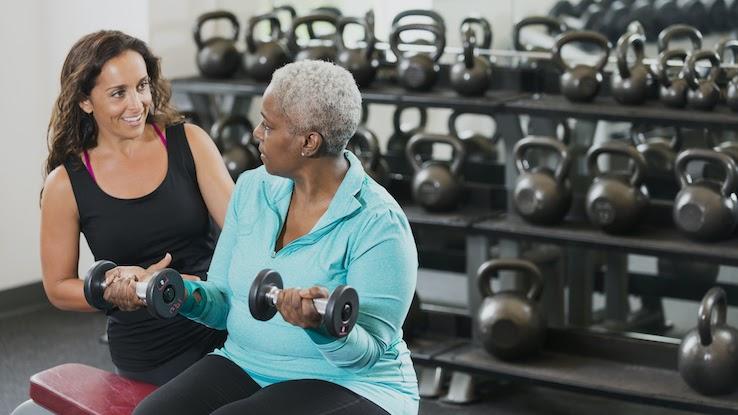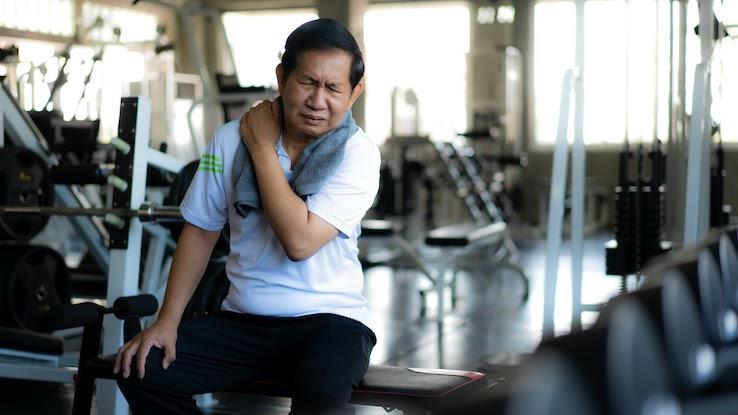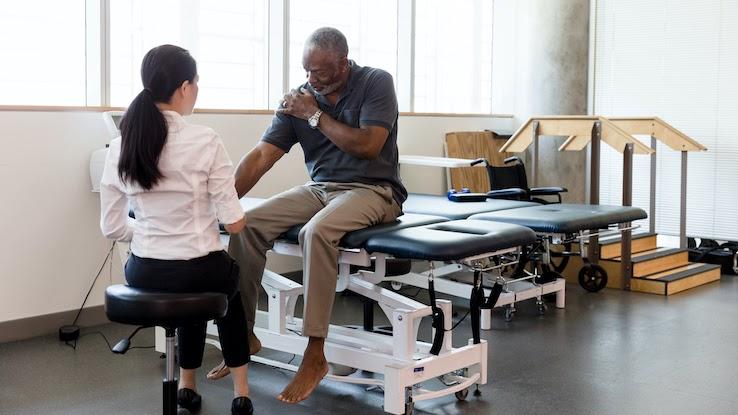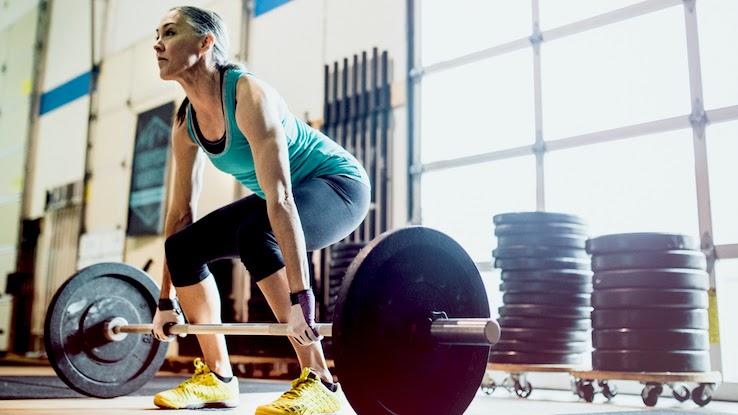
The 5 Most Common Weightlifting Injuries and How to Treat Them
Weightlifting is a common form of exercise among everyday gymgoers and professional athletes alike. Lifting weights can be enjoyable and challenging, providing an opportunity to improve your overall health while hitting new milestones as you become stronger. However, lifting with poor form, lifting too frequently or lifting weights heavier than you’re comfortable with can all lead to injury. Although some degree of soreness is a normal part of strenuous exercise, a weightlifting injury may cause more severe damage that could lead to prolonged pain if left untreated.
There are several common injuries found among professional weightlifters and those who lift weights to stay in shape. These occur in the areas of the body used most often in weightlifting, such as the back, shoulders and legs. If you’re looking to stay healthy while lifting weights, learn more about the most common weightlifting injuries, including what causes them and the symptoms that typically occur. Be sure you take care when performing weight-bearing exercises of any kind to avoid injury — and because injuries beyond what we discuss here could also occur.
1. Shoulder Impingement Syndrome

This injury happens when your rotator cuff — a group of muscles and tendons in your shoulder — becomes inflamed. Pain and irritation in this area are due to pinching (impingement) from your shoulder blade. This injury typically happens when you’re performing overhead weightlifting activities, such as lateral raises, bench presses and shoulder presses, and the symptoms typically develop gradually.
The first signs of shoulder impingement are pain in the front of your shoulder and the side of your upper arm, or deltoid region. Initially, you’ll only notice the pain when you’re raising one or both of your arms, but if the injury worsens it may cause pain while you’re lying down or after exercising, too. Pain from shoulder impingement syndrome generally doesn’t radiate below the level of your elbow. If you’re experiencing pain that extends into or past your elbow, this may indicate another problem, such as a pinched nerve.
2. Rotator Cuff Tear

A tear to your rotator cuff may happen when you’re doing the same exercises that can cause shoulder impingement syndrome. However, a tear is a much more serious condition that’s associated with intense pain immediately after the tear occurs, particularly when raising your arm. When the rotator cuff tears, your arm will become weak, and you might also feel a snapping sensation. Depending on the severity of the tear, you may need surgery to treat this injury.
3. Patellar Tendonitis

This injury involves inflammation to the tendon connecting your kneecap to your shinbone. It’s often a result of your quadricep muscles being too tight or overused. This adds stress on your kneecap, which causes inflammation and eventual injury. The condition is marked by pinpoint pain at the base of your kneecap, which generally worsens over time. Hack squats, lunges and any weightlifting you do with your legs can potentially cause this injury.
4. Back Sprains and Strains

Because many weightlifting exercises require you to use muscles in your back, strains and sprains in this area of the body are common. Sprains involve torn or overstretched ligaments in your back, whereas strains are due to torn muscles or tendons. In both cases, pain, swelling and trouble moving your back easily are common symptoms. Rows, bench presses, deadlifts and curls are examples of exercises that may cause these types of injuries.
5. Herniated Disk

Another common injury among weightlifters is a herniated disk. This condition occurs when one of the cushions (disks) between the vertebrae bones of your spine either slips out of place or ruptures due to increased pressure. Herniated disks most often occur in the lower back, but they can also occur in the neck.
Depending on the location of the herniated disk and whether you experience nerve irritation, pain, numbness or weakness may be present in your back or in one of your legs or arms. This injury might happen when you’re trying to lift heavy weights with your back muscles rather than the muscles in your legs. Deadlifts are the most common weightlifting-related cause of this injury.
Tips for Preventing Weightlifting Injuries

There are several steps that you can take to help prevent these common injuries. Before, during and after your weightlifting workout, follow these guidelines to lower your chances of injuring yourself:
- Making sure that your muscles are warmed up before any workout begins is a great way to avoid strains, sprains, tears and other common weightlifting injuries. Always be sure to stretch your muscles well before you lift weights. Light stretching after a workout may also help prevent muscle tightness the following day.
- Ensuring proper form and execution of any exercise are key to avoiding injury. If necessary, watch videos or seek the help of a fitness professional or instructor before you try different workouts. Always start slowly when lifting weights to maintain control and proper posture. Never sacrifice proper form to increase the amount of weight you’re lifting, which is a common mistake among beginning weightlifters.
- It’s normal for your muscles to feel sore or swollen after a vigorous weightlifting session. You’ll want to drink a lot of water during your recovery period. You can reduce any swelling by taking an anti-inflammatory medication, such as ibuprofen or acetaminophen. You may also consider taking an omega-3 supplement or eating foods high in omega-3 fatty acids, which are known to help with inflammation. Lastly, try applying an ice pack in 10-minute increments every hour to the affected area.
- Many athletes make the mistake of continuing to exercise despite feeling the initial pangs of an injury. One of the best things you can do to prevent injuries is to listen to your body. If you start to feel new pain or twinges, especially during a specific movement or exercise, consider taking a break from your workout. It may be frustrating to feel like you’re losing progress, but reducing your intensity level can prove to be enormously helpful in avoiding further injury while speeding up your recovery time.
If your pain doesn’t subside after taking the steps listed above (or if you experience a more serious injury, such as a rotator cuff tear or a herniated disk), see your doctor right away. You may need to discuss different treatment options, such as physical therapy or surgery, to heal your injury successfully.
Resource Links:
https://bjsm.bmj.com/content/51/4/211
https://www.ncbi.nlm.nih.gov/pmc/articles/PMC5895929/
https://my.clevelandclinic.org/health/diseases/7079-shoulder-impingement-syndrome
https://my.clevelandclinic.org/health/diseases/8291-rotator-cuff-tears-overview
https://www.mayoclinic.org/diseases-conditions/patellar-tendinitis/symptoms-causes/syc-20376113
https://www.aans.org/Patients/Neurosurgical-Conditions-and-Treatments/Low-Back-Strain-and-Sprain
https://www.mayoclinic.org/diseases-conditions/herniated-disk/symptoms-causes/syc-20354095
https://www.betterhealth.vic.gov.au/health/HealthyLiving/resistance-training-preventing-injury





